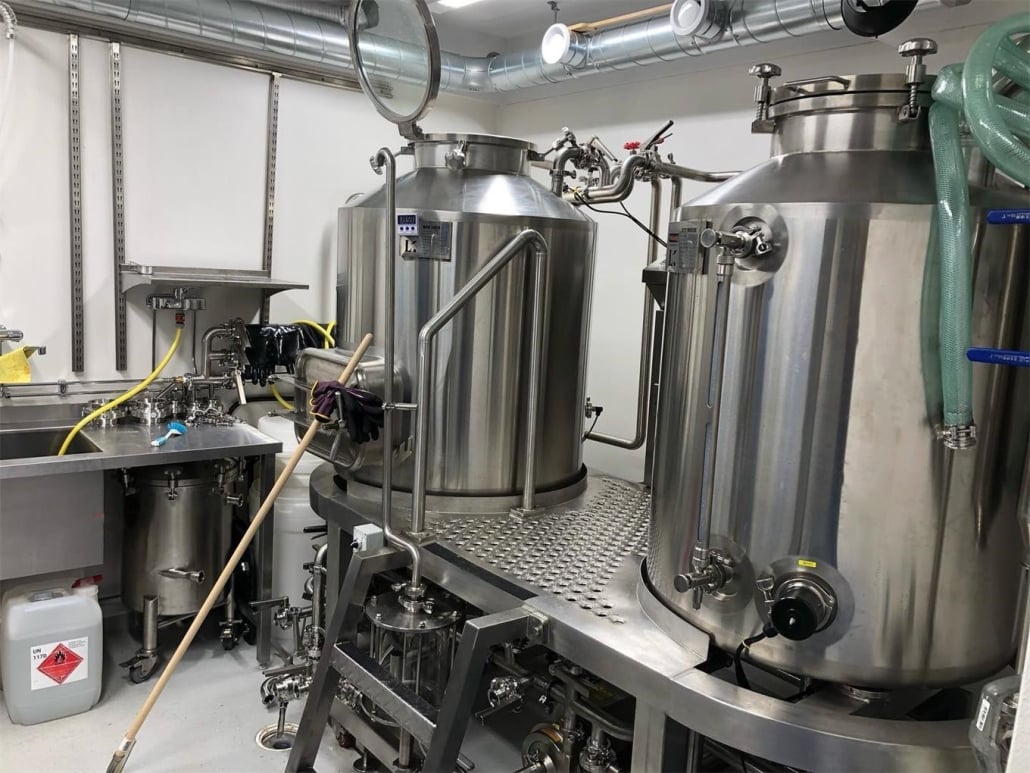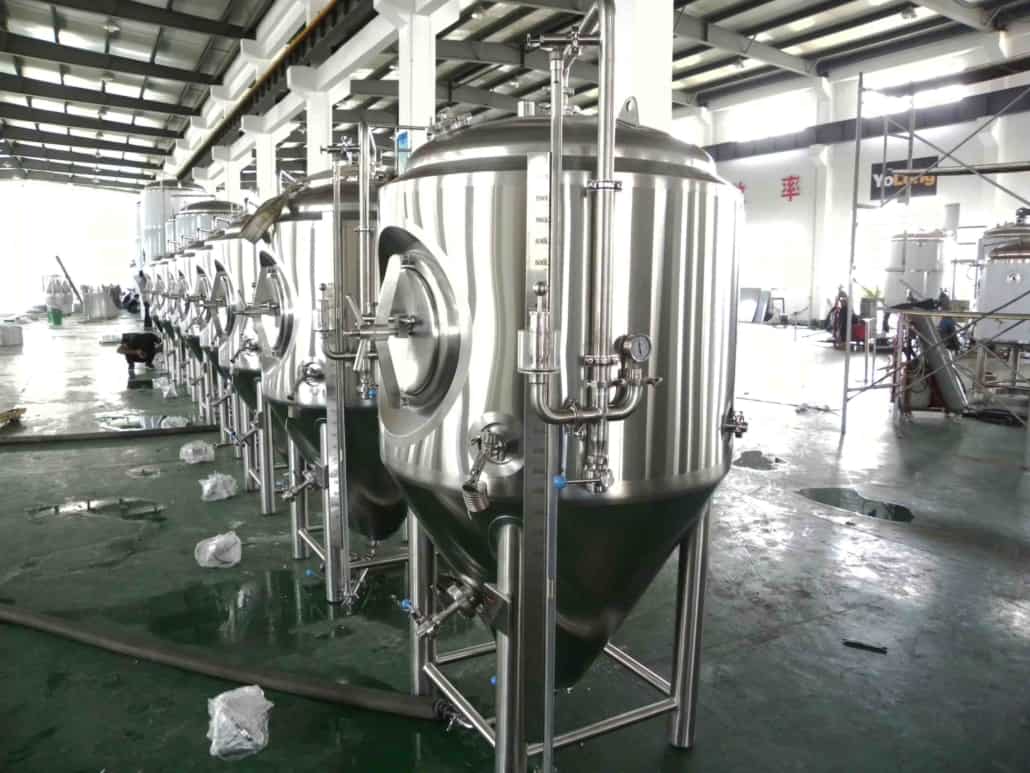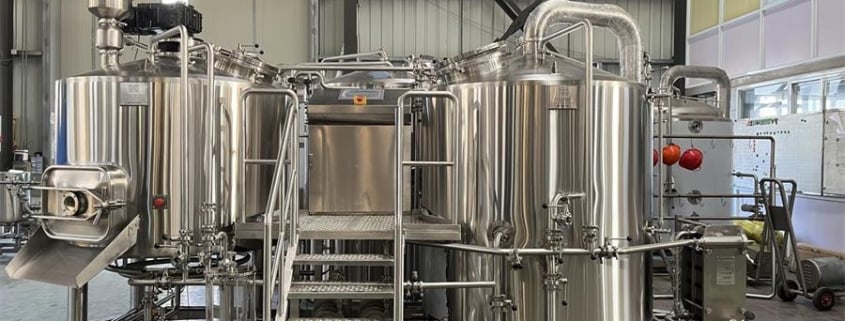beer making machine
beer making machine is a popular hobby that allows you to create customized brews. Having the right equipment makes the process much easier. This guide provides an overview of the key equipment needed at different stages of the beer production process.
Types of Beer Making Equipment
The main types of equipment for making beer at home include:
| Equipment | Description |
|---|---|
| Brew kettle | Heats water and grain mixture to extract sugars and flavors. Stainless steel kettles with temperature controls work best. |
| Fermenter | Food-grade plastic or stainless steel bucket where fermentation occurs. Must have tight seal. |
| Airlock | Allows CO2 to escape without letting air in during fermentation. Attaches to drilled hole in fermenter lid. |
There are also many accessories like thermometers, tubing, sanitizers, bottles, and more used in the beer making process.

Overview of the Beer Brewing Process
The main stages of beer production include:
- Mashing – The grains are steeped in hot water to convert starch into fermentable sugar. This takes 1-2 hours.
- Boiling – The mash is filtered and boiled with hops for 60-90 minutes. This adds flavors and bitterness.
- Fermenting – Yeast is added to start fermentation, converting sugars into alcohol. This takes 1-4 weeks.
- Bottling – The final beer is packed into bottles or kegs along with some sugar and yeast. It carbonates and conditions for 2-4 weeks.
The proper equipment is needed at each stage to hold ingredients, control temperature, ferment cleanly, and bottle securely.
Beer Making System Capacity, Design and Customization
Home brewing systems are available in different batch sizes and configurations:
| Size | Batch Volume | Description |
|---|---|---|
| Small | 5-10 liters | Countertop systems for new brewers. Limited customization. |
| Medium | 20-100 liters | Freestanding systems on wheels provide flexibility. Modular options allow some customization of vessels, valves, etc. |
| Large | 200+ liters | Commercial-grade, made-to-order brewhouses. Fully customized to match brewery operations and space. |
Larger systems allow brewing higher volumes per batch. They can also accommodate more customization of tank numbers, shapes, valves, welds, automation, etc. But they require more space and have higher equipment cost.
Beer Brewing Equipment Suppliers and Pricing
There are many equipment manufacturers catering to commercial and home brewers:
| Supplier | Products | Price Range |
|---|---|---|
| Blichmann Engineering | Kettles, burners, conical fermenters | 500 |
| Spike Brewing | Kettles, conicals, eBIAB systems | 80 |
| Northern Brewer | Full brewery kits for beginners |
Prices range from under $100 for basic homebrew kits to over $10,000 for commercial-scale stainless steel brewhouses. Choosing reputable manufacturers ensures durable, food-safe equipment.
Installing and Operating Beer Making Machinery
Proper installation and operation ensures efficiency, safety and beer quality:
| Activity | Guidelines |
|---|---|
| Installation |
|
| Operation |
|
| Maintenance |
|
Partnering with an experienced brewery engineering firm is advised for larger professional installations. They can ensure optimized layout and safety.
How to Select the Right Beer Brewing Supplier
Choosing an equipment vendor involves evaluating several factors:
| Factor | Considerations |
|---|---|
| Reputation |
|
| Offerings |
|
| Services |
|
Getting quotes from multiple vendors allows detailed comparison on pricing, quality and service terms. Site visits to view product samples and manufacturing also help inform supplier selection.
Pros and Cons of Commercial Beer Brewing Systems
Commercial-scale equipment has some clear advantages but higher costs as well:
| Pros | Cons | |
|---|---|---|
| Production Volume | Large batch sizes for wider distribution and sales | Higher equipment investment and operating expenses |
| Automation | Improves consistency and labor efficiency | Requires technical skill to program and maintain |
| Quality | Commercial-grade parts improve durability | Harder for new brewers to achieve flavor complexity |
Choosing Between New or Used Brewing Systems
Setting up a commercial brewery involves deciding between purchasing new or previously-owned equipment. There are tradeoffs to consider:
| New Systems | Used Systems | |
|---|---|---|
| Cost | Higher initial price | Discounted from depreciation |
| Condition | Latest technology | May have wear/tear |
| Lead Time | 3-6 months for custom fabrication | Ready for quick delivery |
| Warranties | Full manufacturer coverage | None or limited |
Inspecting equipment and getting experienced consultation is vital before purchasing used systems. New custom systems take longer but carry less risk.
Key Considerations for Planning a Brewery Layout
The physical brewery layout impacts efficiency. Below are important considerations:
- Optimize process flow from raw materials to finished goods loading bays.
- Position heavy equipment like mills, kettles and fermenters near structural building supports.
- Ensure adequate spacing for material movement, cleaning and maintenance access.
- Locate noisiest, hottest equipment away from offices/taprooms.
- Design flexibly to accommodate future expansion or process changes.
- Comply with safety, building, and environmental codes for commercial food/beverage facilities.
While equipment determines fundamental layout, customizing the structure and floorplan allows optimizing for budgets and site constraints.

Calculating Costs of Equipping a Brewery
Major costs when equipping a brewery include:
- Fixed asset investments – Brewhouse vessels, plumbing, automation, cooling systems. Typically 50-70% of start-up costs.
- Utilities – Electric/gas/water connections, wiring, wastewater lines. Varies based on site.
- Facilities – Building shell, flooring, lighting, construction fees. Often 20-30% of capital.
- Auxiliary purchases – Ingredient handling, cleaning, lab equipment. 5-10% range.
- Other – Design/engineering, permitting, contingency funds.
Total equipment capital expenditure averages $200-$500 per annual barrel brewing capacity for typical craft breweries. Developing detailed lists then obtaining vendor quotes is key for accurate budgeting.
Options for Financing and Managing Costs
Acquiring financing helps new brewers afford major equipment purchases:
- Small business administration loans provide accessible financing for US-based brewers.
- Crowdfunding generates capital from a community investor base.
- Grants are offered in some regions to encourage brewery startups.
- Partner investors add expertise while sharing risk and startup costs.
Phasing growth also helps manage costs through incremental capacity expansion after establishing reputation and distribution.
Leasing equipment or buying second-hand can reduce initial outlay. Lower risk designs focusing on core vessels first also provide cost control opportunities.













